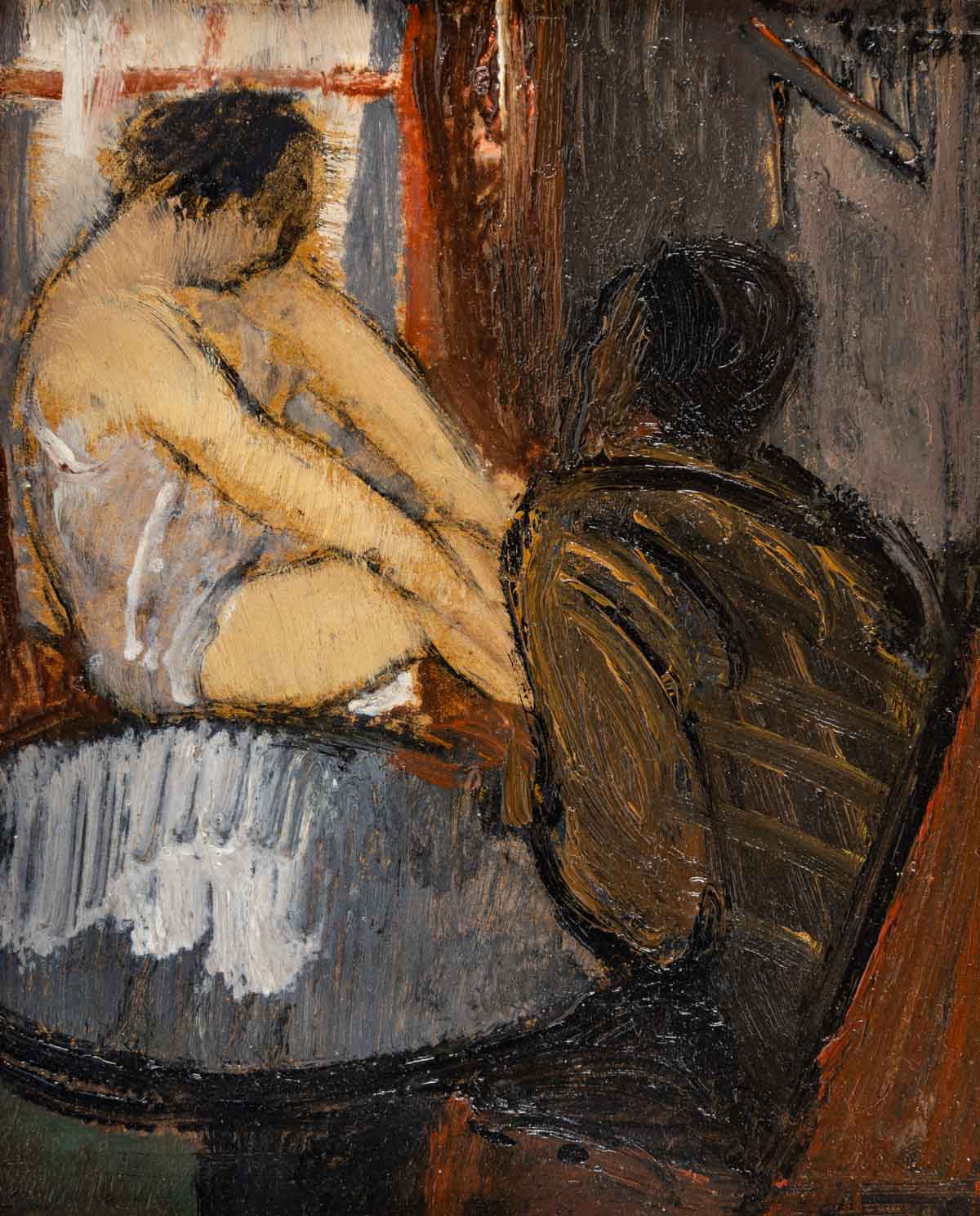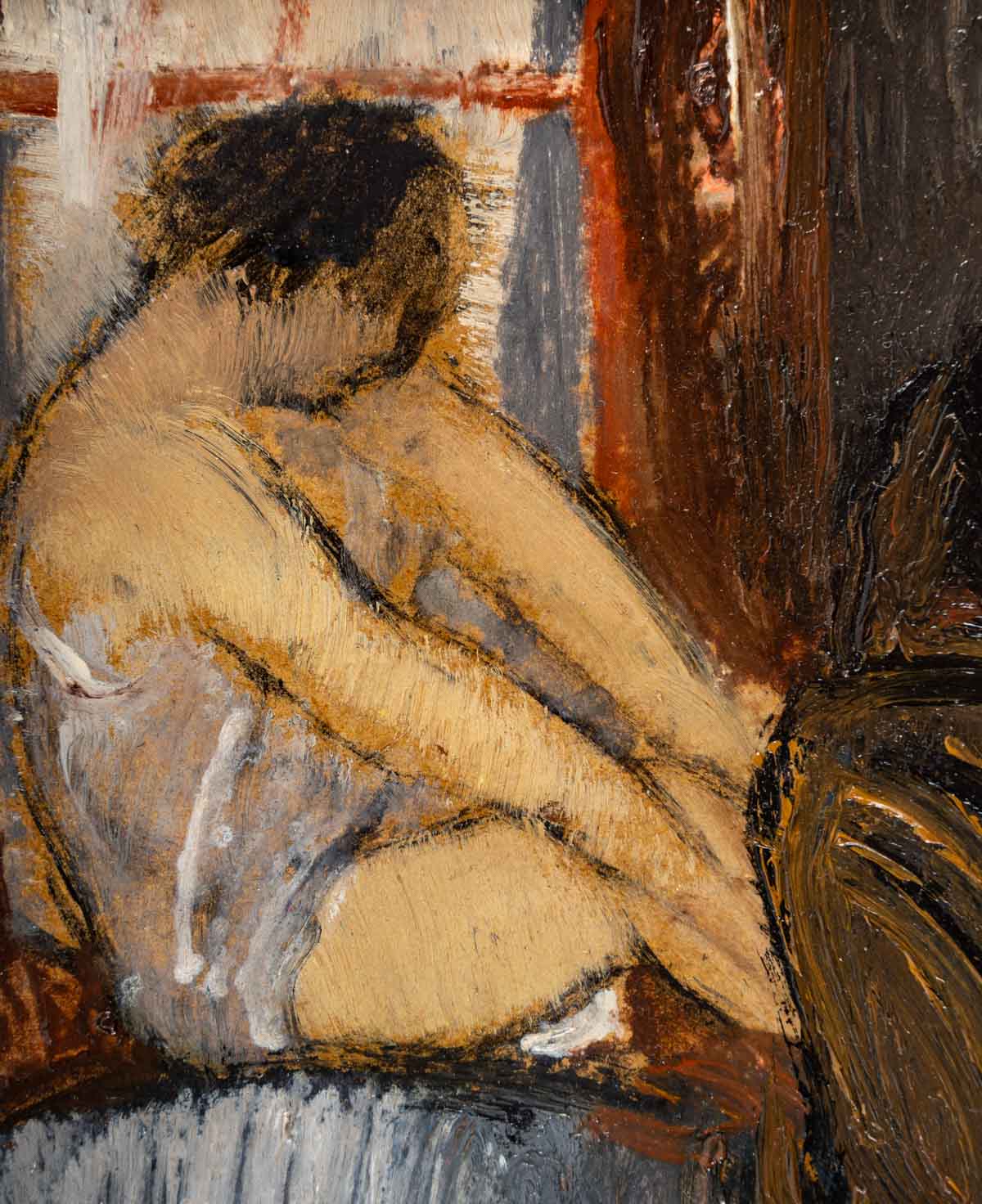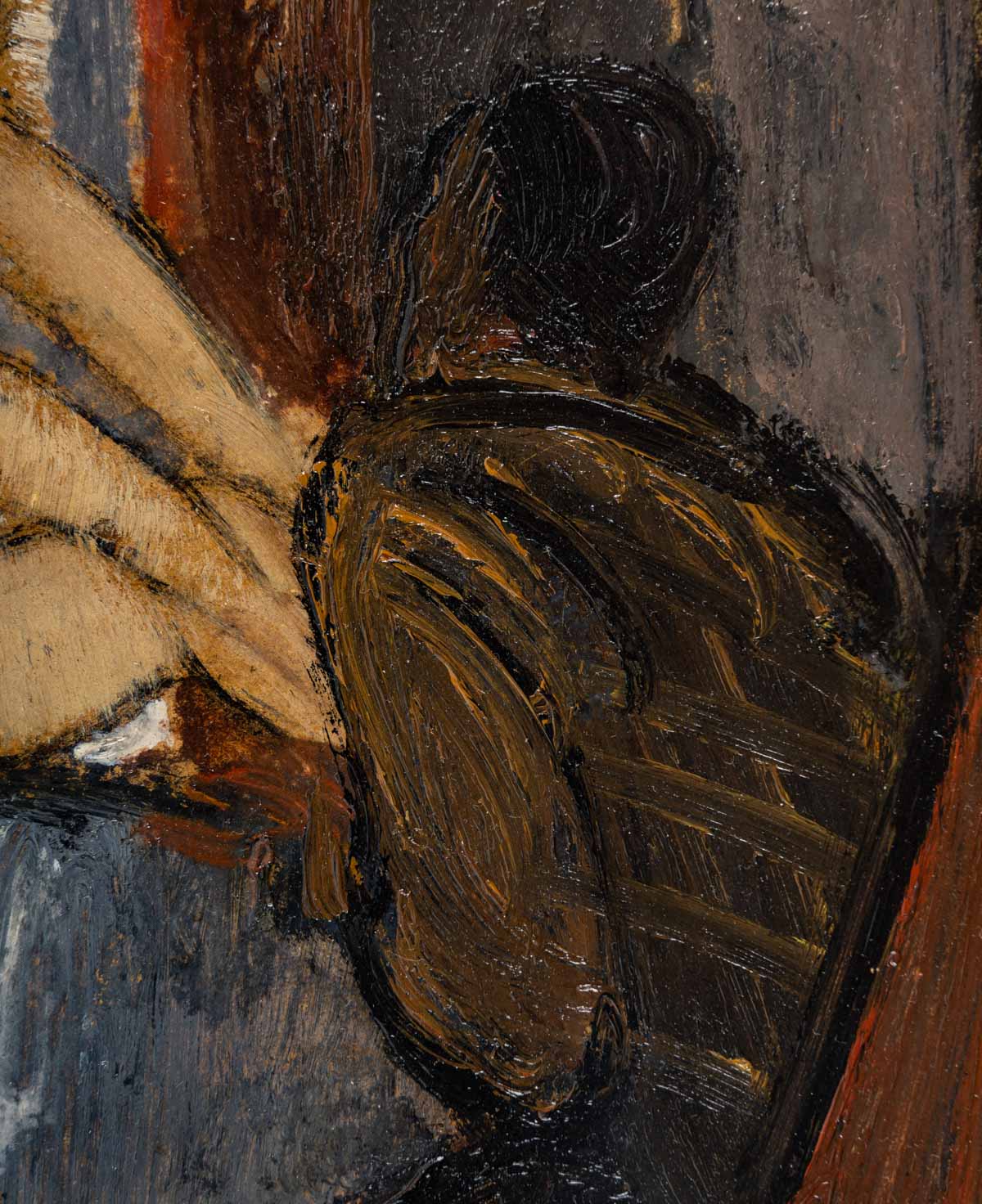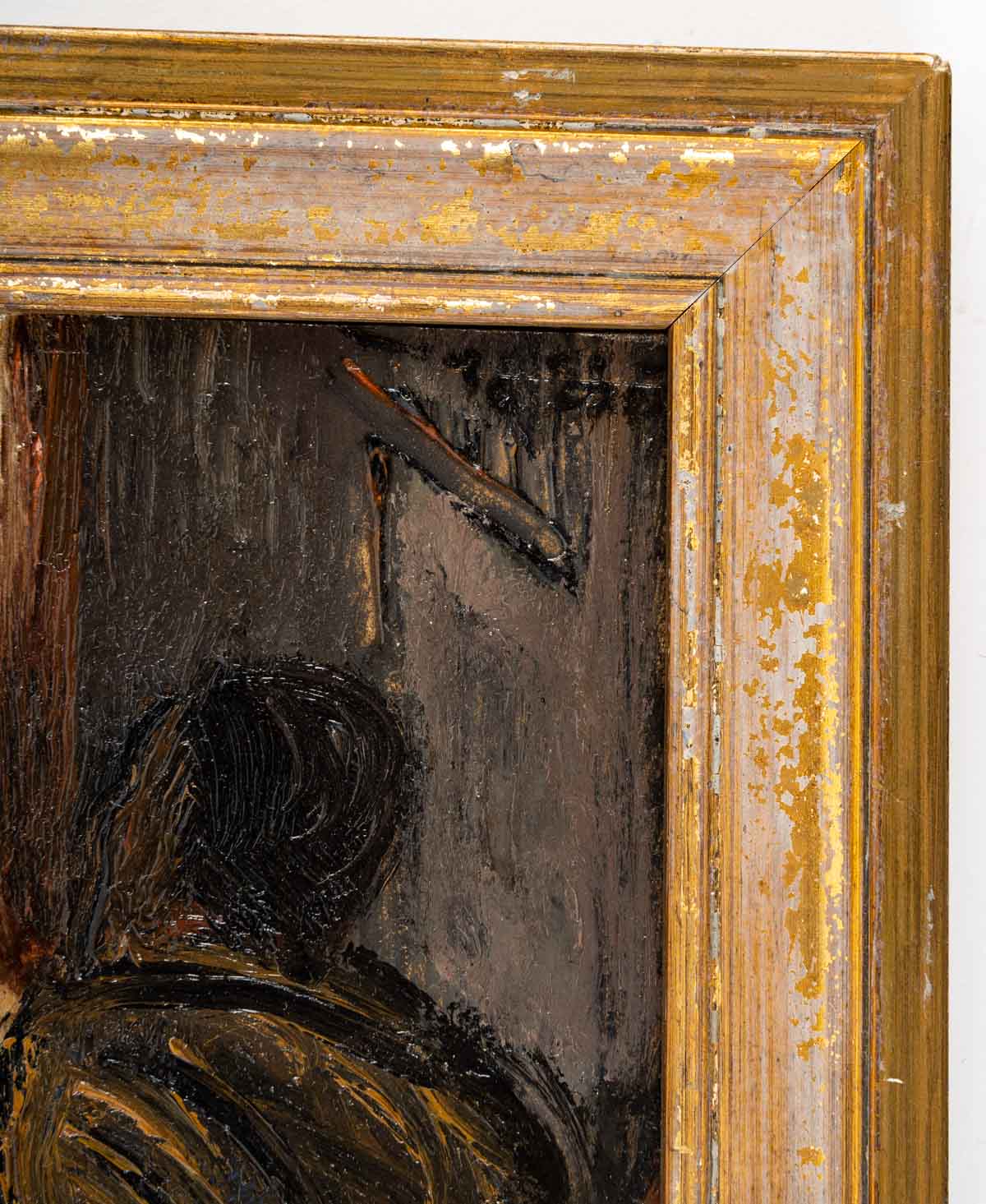Francois EBERL
The lover
Oil on cardboard
Signed upper right
Size: 20 x 16cm
Price: 5500 euro
François Eberl was born in Prague in 1887 into a family of the city’s bourgeoisie, of Swedish and French origin. All his life, the artist will never stop painting the Parisian life of folklore, from its bright windows to the alleys of its misery. Like Toulouse-Lautrec, he wanted to represent all the women, whom Arsène Alexandre, critic, calls his “Mona Lisa of sidewalks”. He gives charisma, elegance and nostalgia to prostitutes, their black eyes recall those of Marie Laurencin (famous French painter, friend of Modgliani and Eberl).
After studying at the Beaux-Arts in Prague in 1905, he traveled to Europe (Munich, Amsterdam, Stockholm), then moved to Paris in the Montparnasse district in 1911. In Paris, the young artist quickly exhibited the most famous Parisian Salons. In 1919, he stayed in Montmartre and met the Bohemian painters: Pablo Picasso, Maurice Vlaminck and Amedeo Modigliani. He maintains a friendship with each of them. His art is promoted by the Montmartre critical circle of Francis Carco, François Dorgelès and Pierre Mac Orlan.
In the 1920s, Eberl’s career took a decisive turn. It is shown and requested, the dealer and gallery owner Berthe Weil exhibits it. He became a member of the Salon des Artistes Indépendants, was admitted to the Freemason lodge Thélème which he decorated years later, in 1956. He acquired French nationality around 1920, was made a Knight of the Legion of Honor in 1928.
Eberl goes beyond the limits of his profession as a painter: he organizes a few exhibitions (“French art”, Stockholm) and supports his friends by putting them in contact with international collectors. The glamor of the 1920s gained its rhythm of life, the painter was one of the chic and eccentric Parisian community. Eberl surrounds himself with exotic animals (a lion, a crocodile), he drives and wins races for Bugatti. It was at this time that he established his second residence in Monaco.
War rings in the heart of Europe; Eberl struggles with his protesting nature as a painter, paints “Kulturkampf” to denounce the Nazi regime, retires to Monaco and joins the Resistance. He did not return to his Paris studio until the end of the war, remarried and settled back into the bourgeois daily life he shared between Paris and Monaco. He was active in the Principality of Monaco, organized exhibitions, co-founded a Salon in 1954.
Museums:
• The painter died in his studio in 1962. It is appreciated and collected all over the world. His paintings have been exhibited in numerous exhibitions: Montreal Museum of Fine Arts, for “From Caillebotte to Picasso” in 2006; a solo exhibition at the Musée de Montmartre in 1987 and in 2002; in Bergamo, Italy for “Artists of the Parisian Salons 1850-1950”.
Bibliography:
• Jean-Daniel Maublanc (preface by Louis Parrot), Perspectives Marcel Lemar, François Eberl, Marcel Roche, Jacques Villon, Charles Kvapil, Charles Jacquemot, Pierre Bach, Julie Winterová-Mezerová , Paris, Éditions G. Girard, 1931.






